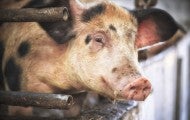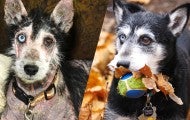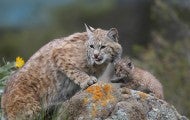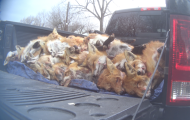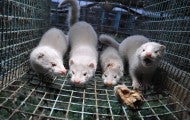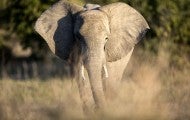We’re devoted to ending the worst forms of systemic animal suffering by working with corporations—and while we’ve had some immense wins, some companies refuse to listen to calls for change. A fascinating discussion on our corporate policy work took place on our Humane Voices podcast, which came out...
Fur production in the U.S. is plummeting, and that’s good news for animals. Every five years, as part of the U.S. Census, the U.S. Department of Agriculture releases data on mink farms in the country. The newly released numbers show that in 2017, 236 mink fur farms existed in the U.S. Five years later, only 110 mink fur farms remained. With the speed of this decline, we believe even more mink farms have closed in the last year.
I recently discussed the benefits of reducing the consumption of animal products both for farmed animals and for the climate. But there are many other potential beneficiaries of a revamping of how animals are bred and farmed in various contexts, from ranches to fur farms. Here are some of the wild animals who suffer because of animal agriculture.
The rescue and reunion of animals whose lives we touch comprise the most joyful elements of our work within the Humane Society of the United States and across the range of our affiliates. In a season of reflection, gratitude and transition to a New Year, I draw special hope from the stories of three...
Since Illinois reopened its bobcat hunts in 2015, after a 40-year hiatus, trophy hunters and trappers have killed nearly 1,400 bobcats using some of the cruelest methods imaginable, like steel-jawed leghold traps. These devices are so painful that the animals sometimes gnaw through their own limbs...
In the midst of a booming coronavirus surge across the United States, a related crisis is brewing on the nation’s mink fur farms where outbreaks have failed to be treated with the same level of concern and seriousness we have seen from other countries. A recent striking example of this inaction can...
The U.S. mink industry is in rapid decline, with the drop beginning well before coronavirus outbreaks on mink fur farms here and overseas renewed concerns over this outmoded and cruel industry that’s responsible for so much animal suffering. Last year was the industry’s worst on record, according to...
It is a bloody scene at the Texas weigh-in of the “De Leon Pharmacy and Sporting Goods’ Varmint Hunt #1” on a cold January morning this year. Participants in this wildlife killing contest are unloading the bodies of bobcats, grey foxes, coyotes and raccoons from their trucks, which are expensively...
The use of fur in fashion causes immense suffering for millions of animals, so it’s no wonder that an increasingly animal-loving public is making the strongest fashion statement of all: opting for clothing made from humane and environmentally friendly materials. And yet, some retailers and producers are perpetuating the cruelty of fur, refusing to accept that a fur-free future is a near reality.
A federal court judge last night threw out a challenge to San Francisco’s ban on the sale of fur, in a historic victory against this unnecessary and immensely cruel commodity. The city’s ban, which passed in 2018, took effect earlier this year and it led the way for many wins against fur, including...
In 2019, the Humane Society of the United States and our affiliates delivered many victories for wildlife, here in the United States and globally. We made great strides in protecting giraffes, native carnivores like bobcats and cougars, and marine mammals, including whales and dolphins in captivity...
The fundamental purpose of our marquee advocacy training event, Taking Action for Animals Online, occurring on September 19 and 20, is to support greater political and social engagement by those who care about animals. COVID-19 hasn’t changed a thing in that regard, and TAFA 2020 features one of the...
It is the height of absurdity that, in 2023, animals continue to be born to be killed and skinned for a coat trim or a pom-pom on a hat. But we are heartened that with each year we see monumental progress toward our vision: a world in which not a single animal is killed just for fashion. The fight against the fur trade is at the heart of our humane movement and has been for decades. Every year that passes sees a heightened public awareness of the importance of this fight. In 2023, we’ve continued to put pressure on the industry, leading to a significant decline in fur production globally.
Some threats facing animals can seem too gargantuan to fight. Those are precisely the issues we choose to pursue, and I am immensely proud of our commitment to exposing some of the cruelest practices facing animals all over the world. Canada’s commercial seal slaughter is one of these immense and...


